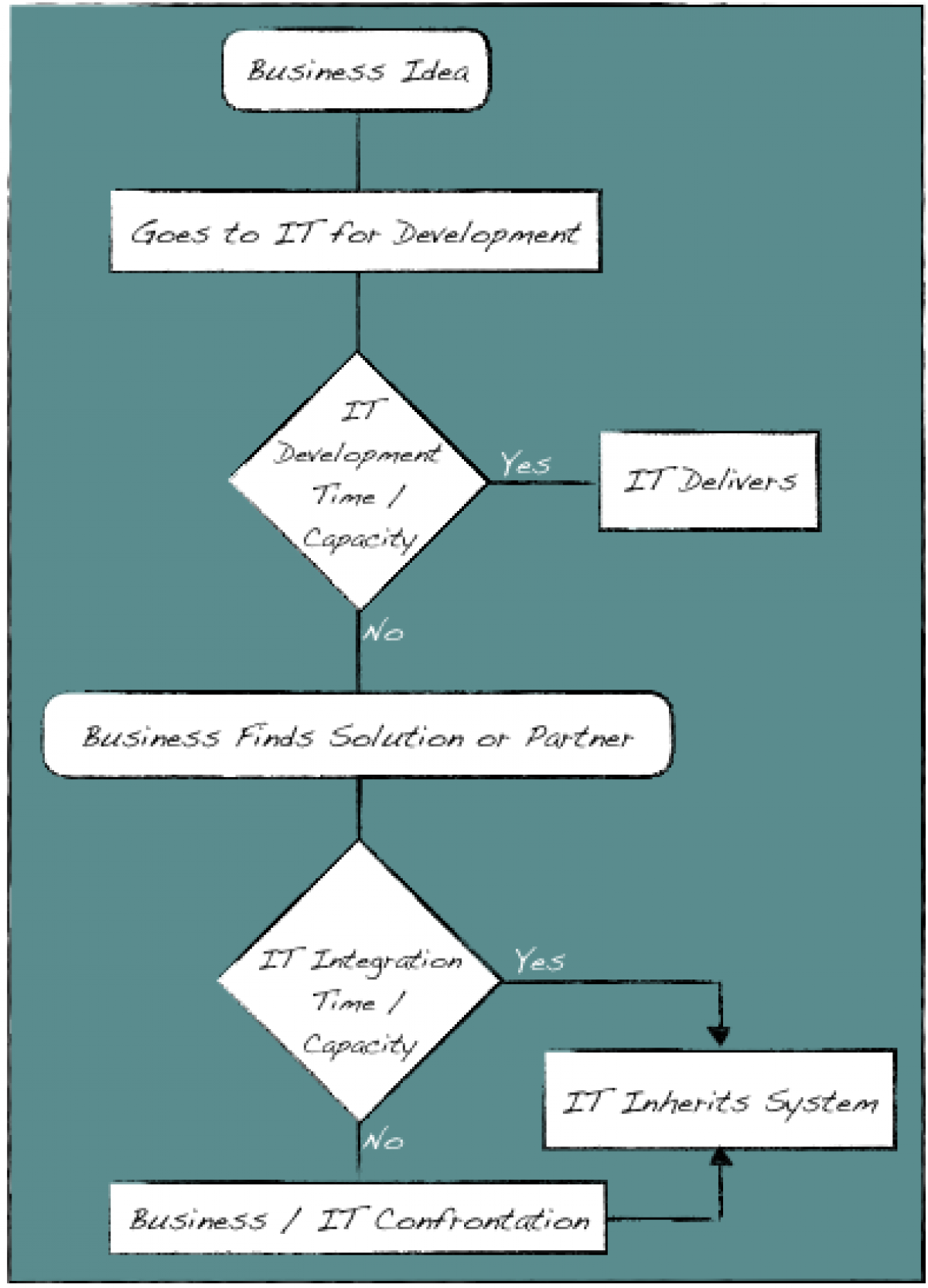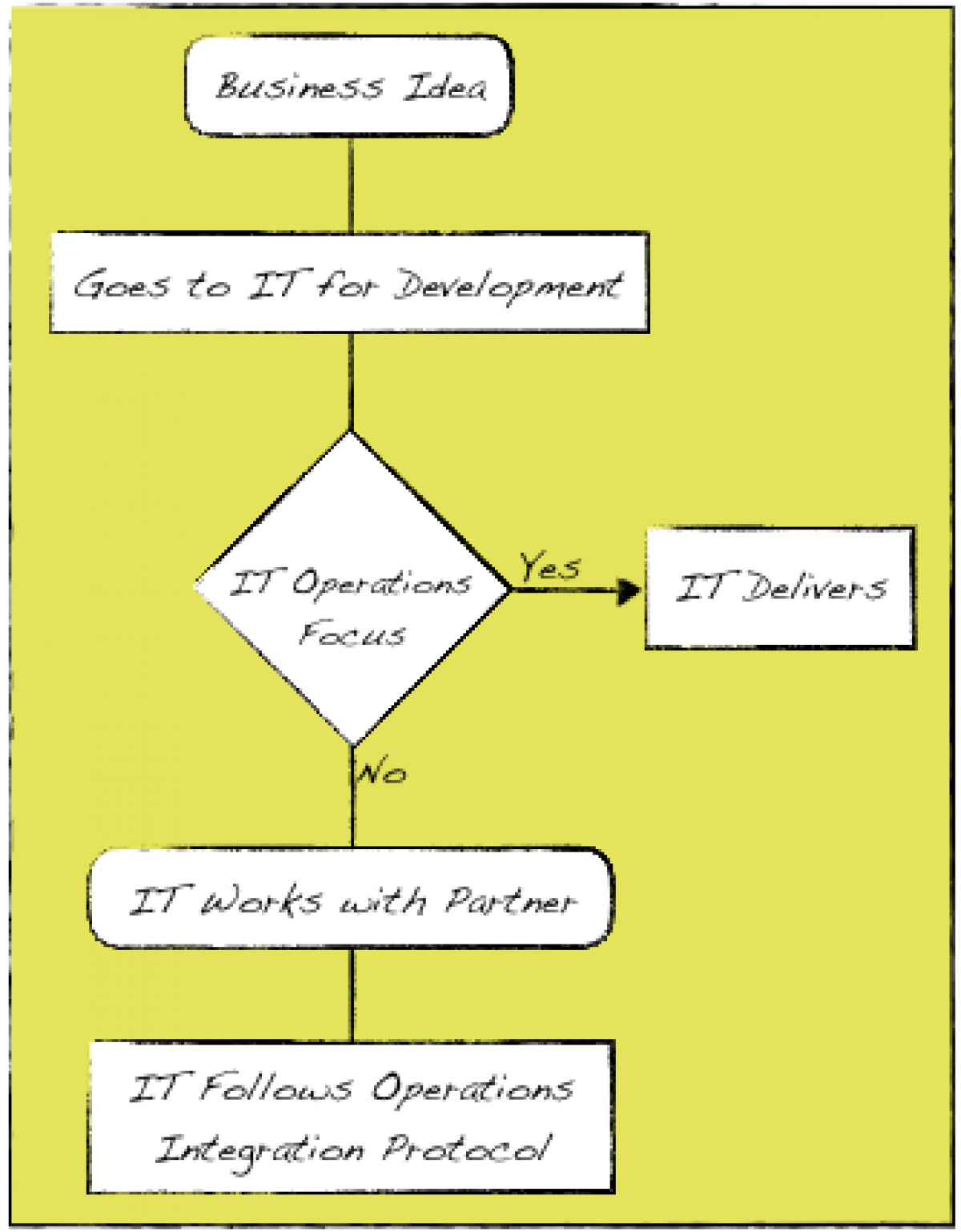How can you innovate when at least 75% of your budget is spent on operations? BiModal IT can help squeeze a little innovation out of what remains.

BiModal IT Model for Innovation
Article Sep 27, 2016
Rob Keefer
Different divisions within a large organization hopefully have supporting goals, but often the means by which the goals are met may end up competing for resources. This is especially true in healthcare systems as they try to integrate new solutions into their IT infrastructure.
Healthcare CIOs, VPs and Directors across the country tell me how their primary focus is operational (or urgent), rather than pursuing differentiated or innovative solutions. According to a Gartner survey, 75% of IT budgets, regardless of industry, are spent on operations. I have heard of healthcare systems with 80% or more of their budget focused this way.
Through conversations with HealthIT executives, and my own experience, it appears that often IT ends up inheriting some system that it did not recommend or even know was considered. The flowchart below (Figure 1) describes the process, and illustrates the competing priorities that IT struggles to fulfill.

In this setting, the business comes up with an idea, or an initiative, that it needs to support a business goal. When they go to IT for support, IT considers its current capacity to determine whether it can fulfill the request. If it can, the IT department initiates the project. If it does not have capacity, the business may feel urgency to go around IT and bring in their own solution. This creates several problems from IT’s perspective. A common problem is that IT does not have capacity to integrate the new system into their environment. They push back on the business, but the business has already signed contracts and spent money. After a confrontation, IT ends up inheriting the system with a lot of reservation and limited bandwidth.
A New Model
A few HealthIT executives I’ve spoken with have decided to avoid this vicious cycle and instead approach it by focusing internal resources on IT’s core—operational performance and optimization with DevOps. In order to do this though, they are leaning to collaborate with external partners who specialize in web and mobile application development, and can work well with, or even mentor towards, an optimized DevOps team.
With this new focus, the flowchart looks very different (Figure 2). And the business sees results. Now, when the business has a request, IT takes on the operational projects, but outsources the other requests, while staying involved enough to be prepared for integration when the time comes. This model of course is not new in IT, but it does seem new to HealthIT. This second approach highlights how a few executives are embracing what Gartner Group calls BiModal IT.

In BiModal IT, Mode 1 focuses on traditional operations, IT services, and emphasizes safety, security, and accuracy. Whereas Mode 2 incorporates practices focused on agility, speed, innovation and iteration. According to Gartner, 45% CIOs report having a minimal Mode 2 capability. My experience is that HealthIT organizations are much lower than this industry number.
The top three barriers that organizations expressed with the adoption of a Mode 2 team are culture (15%), competing priorities (13%), and legacy environments (10%).
Culture
Healthcare Systems traditionally employ people who are naturally bent toward safety, security, and are slow to change for changes sake. These people are perfect to support the operations and Mode 1 teams.
Culture change is a long-term undertaking and attempts to move an existing team to a Mode 2 culture will prove to be difficult. By pulling in a Mode 2 partner, a healthcare system can receive a boost in support while it focuses on culture change in core operational support and develops an optimized DevOps initiative.
Competing priorities
Most HealthIT organizations are overwhelmed with competing priorities from optimizing their own operations with DevOps initiatives, to Big Data initiatives, while accommodating the many apps and systems that the business desires to deploy within the system - all with limited resources.
It is important for HealthIT executives to identify the types of initiatives that a Mode 2 team can undertake and direct appropriate business requests to these teams and away from the important operational initiatives.
Legacy Environments
Even as Health Systems are completing their initial deployment of an EHR system, it is already considered ‘legacy’. Traditionally these environments are closed and difficult to support interoperability. By having Mode 1 teams open up the legacy environments with SOAs or APIs, Mode 2 teams are free to develop new approaches and support systems with minimal impact to the Mode 1 team resources.
By understanding and embracing these constraints, Health IT executives are more equipped to develop strategies for successfully guiding their teams in both optimizing their operations, and also creating new solutions to meet their organizational goals.
Looking for a guide on your journey?
Ready to explore how human-machine teaming can help to solve your complex problems? Let's talk. We're excited to hear your ideas and see where we can assist.
Let's Talk